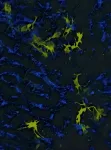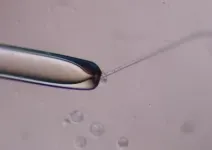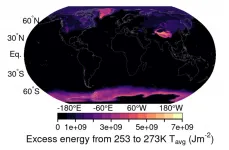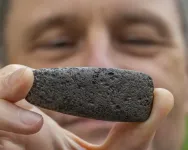Stress-free path to stress-free metallic films paves the way for next-gen circuitry
Optimized sputtering technique helps minimize stress in tungsten thin films
2021-07-03
(Press-News.org) Tokyo, Japan - Researchers from Tokyo Metropolitan University have used high power impulse magnetron scattering (HiPIMS) to create thin films of tungsten with unprecedentedly low levels of film stress. By optimizing the timing of a "substrate bias pulse" with microsecond precision, they minimized impurities and defects to form crystalline films with stresses as low as 0.03 GPa, similar to those achieved through annealing. Their work promises efficient pathways for creating metallic films for the electronics industry.
Modern electronics relies on the intricate, nanoscale deposition of thin metallic films onto surfaces. This is easier said than done; unless done right, "film stresses" arising from the microscopic internal structure of the film can cause buckling and curving over time. Getting rid of these stresses usually requires heating or "annealing". Unfortunately, many of the best metals for the job e.g. tungsten have high melting points, meaning that the film needs to be heated to over 1000 degrees Celsius. Not only is this energy intensive, but it severely limits which substrate materials can be used. The race is on to create films out of high melting point metals without these stresses in the first place.
A team led by Associate Professor Tetsuhide Shimizu of Tokyo Metropolitan University have been working with a technique known as high power impulse magnetron scattering (HiPIMS), a sputtering technique. Sputtering involves applying a high voltage across a metallic "target" and a substrate, creating a plasma of charged gas atoms which bombards the metallic target and forms a charged metal vapor; these metal ions fly towards the substrate where they form a film. In the case of HiPIMS, the voltage is pulsed in short, powerful bursts. After each pulse, it is known that there is some separation between the arrival of metal and gas ions at the substrate; a synchronized "substrate bias" pulse can help selectively accelerate the metal ions, creating denser films. Yet despite many efforts, the issue of residual stress remained.
Now, using argon gas and a tungsten target, the team looked at how ions with different energies arrived at the substrate over time in unprecedented detail. Instead of using a bias pulse set off at the same time as the HiPIMS pulse, they used their knowledge of when different ions arrived and introduced a tiny delay, 60 microseconds, to precisely select for the arrival of high energy metal ions. They found that this minimized the amount of gas ending up in the film and efficiently delivered high levels of kinetic energy. The result was a dense crystalline film with large grains and low film stress. By making the bias stronger, the films became more and more stress-free. The efficient delivery of energy to the film meant that they had, in fact, achieved a similar effect to annealing while they deposited the film. By further swapping out argon for krypton, the team realized films with a stress as low as 0.03 GPa, comparable to what can be made with post-annealing.
An efficient pathway to stress-free films will have a significant impact on metallization processes and the manufacture of next-generation circuitry. The technology may be applied to other metals and promises big gains for the electronics industry.
INFORMATION:
This work was supported by the Fund for the Promotion of Joint International Research (No.17KK0136) of the Japan Society for the Promotion of Science (JSPS), the Swedish Research Council (No. VR 2018-04139), and the Swedish Government Strategic Research Area in Materials Science on Functional Materials at Linköping University (Faculty Grant SFO-Mat-LiU No. 2009-00971).
[Attachments] See images for this press release:
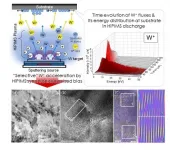
ELSE PRESS RELEASES FROM THIS DATE:
2021-07-02
In recent years, immunotherapy has revolutionised the field of cancer treatment. However, inflammatory reactions in healthy tissues frequently trigger side effects that can be serious and lead to the permanent discontinuation of treatment. This toxicity is still poorly understood and is a major obstacle to the use of immunotherapy. Scientists from the University of Geneva (UNIGE), Switzerland, and Harvard Medical School, United States, have succeeded in establishing the differences between deleterious immune reactions and those targeting tumour cells that are sought after. It appears that while the immune mechanisms are similar, the cell ...
2021-07-02
It is the membrane of cancer cells that is at the focus of the new research now showing a completely new way in which cancer cells can repair the damage that can otherwise kill them.
In both normal cells and cancer cells, the cell membrane acts as the skin of the cells. And damage to the membrane can be life threatening. The interior of cells is fluid, and if a hole is made in the membrane, the cell simply floats out and dies - a bit like a hole in a water balloon.
Therefore, damage to the cell membrane must be repaired quickly, and now research from a team of Danish researchers shows that cancer cells use a ...
2021-07-02
Fast facts:
Nanobodies have been shown to inhibit the dysfunction of key proteins involved with various diseases such as rheumatoid arthritis, osteoarthritis, psoriasis, B-cell lymphoma, and breast cancer
Understanding the structure of a nanobody helps to better understand its disease-fighting potential
Typically, the protein structure is determined from solid samples. Researchers at NYUAD used a liquid state technique to determine protein structure.
Abu Dhabi, UAE: For the first time in the UAE, researchers at NYU Abu Dhabi have used ...
2021-07-02
For decades, people have wondered why pelagic red crabs--also called tuna crabs--sometimes wash ashore in the millions on the West Coast of the United States. New research shows that atypical currents, rather than abnormal temperatures, likely bring them up from their home range off Baja California.
Alongside the discovery, the scientists also created a seawater flow index that could help researchers and managers detect abnormal current years.
The new study, published July 1 in Limnology and Oceanography, began after lead author Megan Cimino biked past a pelagic red crab stranding on her way to her office in Monterey ...
2021-07-02
East Hanover, NJ. July 2, 2021. Among wheelchair users with spinal cord injury 42 percent reported adverse consequences related to needing wheelchair repair, according to a team of experts in spinal cord injury rehabilitation. The research team, comprised of investigators from the Spinal Cord Injury Model System, determined that this ongoing problem requires action such as higher standards of wheelchair performance, access to faster repair service, and enhanced user training on wheelchair maintenance and repair.
The article, "Factors Influencing Incidence of Wheelchair Repairs and Consequences Among Individuals with Spinal Cord Injury" (doi: 10.1016/j.apmr.2021.01.094) was published online in ...
2021-07-02
BOSTON -- Gaurav Gaiha, MD, DPhil, a member of the Ragon Institute of MGH, MIT and Harvard, studies HIV, one of the fastest-mutating viruses known to humankind. But HIV's ability to mutate isn't unique among RNA viruses -- most viruses develop mutations, or changes in their genetic code, over time. If a virus is disease-causing, the right mutation can allow the virus to escape the immune response by changing the viral pieces the immune system uses to recognize the virus as a threat, pieces scientists call epitopes.
To combat HIV's high rate of mutation, Gaiha and Elizabeth Rossin, MD, PhD, a Retina Fellow at Massachusetts Eye and Ear, a member of Mass General ...
2021-07-02
BUFFALO, N.Y. -- A year after University at Buffalo scientists demonstrated that it was possible to produce millions of mature human cells in a mouse embryo, they have published a detailed description of the method so that other laboratories can do it, too.
The ability to produce millions of mature human cells in a living organism, called a chimera, which contains the cells of two species, is critical if the ultimate promise of stem cells to treat or cure human disease is to be realized. But to produce those mature cells, human primed stem cells must be converted back into an earlier, less developed naive state so ...
2021-07-02
When environmental physicist Kira Rehfeld, from Heidelberg University, visited Antarctica for her research, she was struck by the intense light there. "It's always light in summer. This solar radiation could actually be used to supply the research infrastructure with energy", she observes. However, generators, engines, and heaters in these remote regions have mostly been powered until now by fossil fuels delivered by ship, such as petroleum or petrol, which cause global warming. Besides the high associated economic costs, pollution from even the smallest spills is also a major problem threatening the especially sensitive ...
2021-07-02
July 2, 2021 - For health care organizations looking to improve performance and patient experiences, implementing data-driven solutions can be effective when focusing on addressing health equity and reducing patient length of stay. These topics are explored in selected member-submitted abstracts from the 2020 Vizient® Connections Education Summit that appear in a special supplement to the July/August 2021 issue of the American Journal of Medical Quality, the official journal of the American College of Medical Quality (ACMQ).
Interventions for addressing health equity
To help health care organizations address ...
2021-07-02
GAINESVILLE, Fla. --- Archaeologists have unearthed a END ...
LAST 30 PRESS RELEASES:
[Press-News.org] Stress-free path to stress-free metallic films paves the way for next-gen circuitry
Optimized sputtering technique helps minimize stress in tungsten thin films

